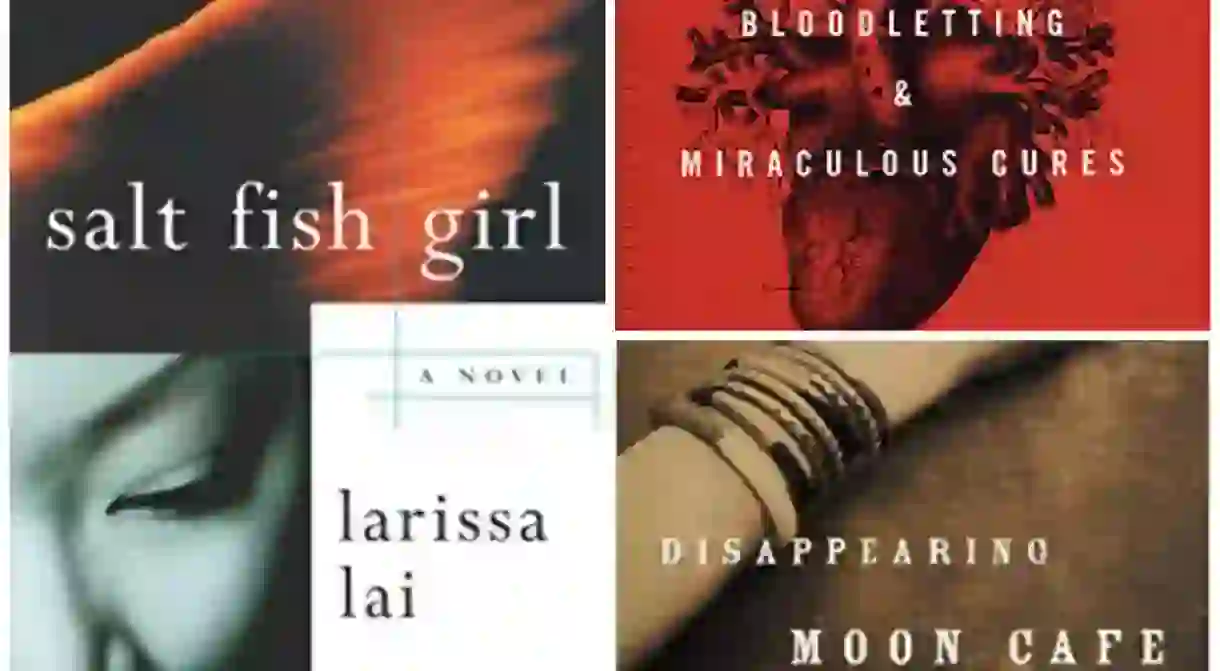6 Must-Read Books by Chinese-Canadian Authors

Chinese-Canadian literature is a colorful thread in the tapestry of the country’s literary imagination, offering insight into the historical and contemporary experiences of this diverse community. If you’re curious to explore Canadian literature beyond the internationally renowned work of Margaret Atwood, these multi-award-winning authors should be next on your list.

The Jade Peony, by Wayson Choy
Set in Vancouver’s Chinatown in the late 1930s–40s, Wayson Choy’s first novel, The Jade Peony (1995), unfolds through the vivid reflections of the three youngest children in an immigrant family. Each of these characters has distinct childhood experiences, depending on their age and sex. Ghosts and family secrets are interwoven through the challenges of the interwar and World War II period, offering insight into the challenges of Chinese immigrant experiences during this time. The Jade Peony won both the 1995 Trillium Book Award and the 1996 City of Vancouver Book Award.

Midnight at the Dragon Café, by Judy Fong Bates
Judy Fong Bates’ debut novel, Midnight at the Dragon Café (2006), follows the story of a young girl growing up in the 1960s. Su-Jen is the daughter of the only Chinese family living in a small town in Ontario, Canada. The challenges of life behind the scenes at the family’s Dragon Café are revealed through Su-Jen’s eyes. Tensions between her parents unfold as Su-Jen explores life beyond the restaurant. Family life is further disrupted by the arrival of Su-Jen’s half-brother. Through this family tale, Judy Fong Bates maps a childhood intensely divided between two cultures and shaped by unfulfilled desires and secrets left unspoken. Midnight at the Dragon Café was selected as the Toronto Public Library One Book Community Read for 2011 and won the 2006 American Library Association Alex Award.

Salt Fish Girl, by Larissa Lai
Salt Fish Girl (2002) by Larissa Lai tells the story of an ageless, shape-shifting female character who traverses time and place. The narrator, Nu Wa, is at once fish, snake, girl, and woman, and in each form, she struggles for survival against distinct challenges. The setting of the novel alternates between 19th-century China and a futuristic version of the Pacific Northwest where corporations rule cities, factory workers are robotically engineered, and middle-class work has become a video game. The story of Nu Wa, the shape-shifter, and the life of Miranda, a girl living in this walled city called Serendipity around the year 2044, converge and intertwine. Framed by magical realism, the novel explores themes of gender, love, honor, intrigue, and fighting oppression, incorporating elements of Chinese lore and mythology. Salt Fish Girl was shortlisted for the 1995 James Tiptree, Jr. Award, the Sunburst Award, and the City of Calgary W.O. Mitchell Award.

Bloodletting & Miraculous Cures, by Vincent Lam
Bloodletting & Miraculous Cures (2006) by Vincent Lam follows the experiences of four young medical students and physicians: Ming, Fitz, Sri, and Chen. The book is structured as 12 interconnected short stories that explore the relationships among the characters, their patients, and their careers. Details come from Lam’s own experience as an emergency room physician, dealing with deadly viruses to delivering babies and, in the process, giving eloquent insight into what it means to be a doctor. Bloodletting & Miraculous Cures was the winner of the 2006 Scotiabank Giller Prize.

Disappearing Moon Café, Sky Lee
First published in 1993, Sky Lee’s first novel, Disappearing Moon Café, explores the lives of the female members of the Wong family through four generations. After the family patriarch, Wong Gwei Chang, arrives in Canada in the late 19th century, he and his family struggle through the poverty and racism of railroad camps. Eventually moving to Chinatown in Vancouver, family life is shaped by interrelated conflicts: male vs. female roles in family and community; traditions vs. modern ways; Chinatown elders vs. dominant white society. The narrative shifts between past and present, and between Canada and China, creating a multi-generational story that blends fiction with historical fact. Disappearing Moon Café won the 1990 City of Vancouver Book Award and was a 1990 Governor General’s Award Finalist.

The Better Mother, Jen Sookfong Lee
The Better Mother by Jen Sookfong Lee starts in 1958 and traces the relationship of two misfits: Danny Lim, who is eight years old when the story begins, and Miss Val, a burlesque dancer. Years after their first chance encounter, Danny is working as a wedding photographer and spending his nights cruising Stanley Park, far from the house where his family lives. He comes to the realization that part of the key to understanding himself and his family lies in his early connection to Miss Val, and he decides to go and find her. The novel is mainly set during an uncommonly hot Vancouver summer in 1982—when HIV/AIDS was spreading rapidly. The Better Mother was a finalist for the 2012 City of Vancouver Book Award.













